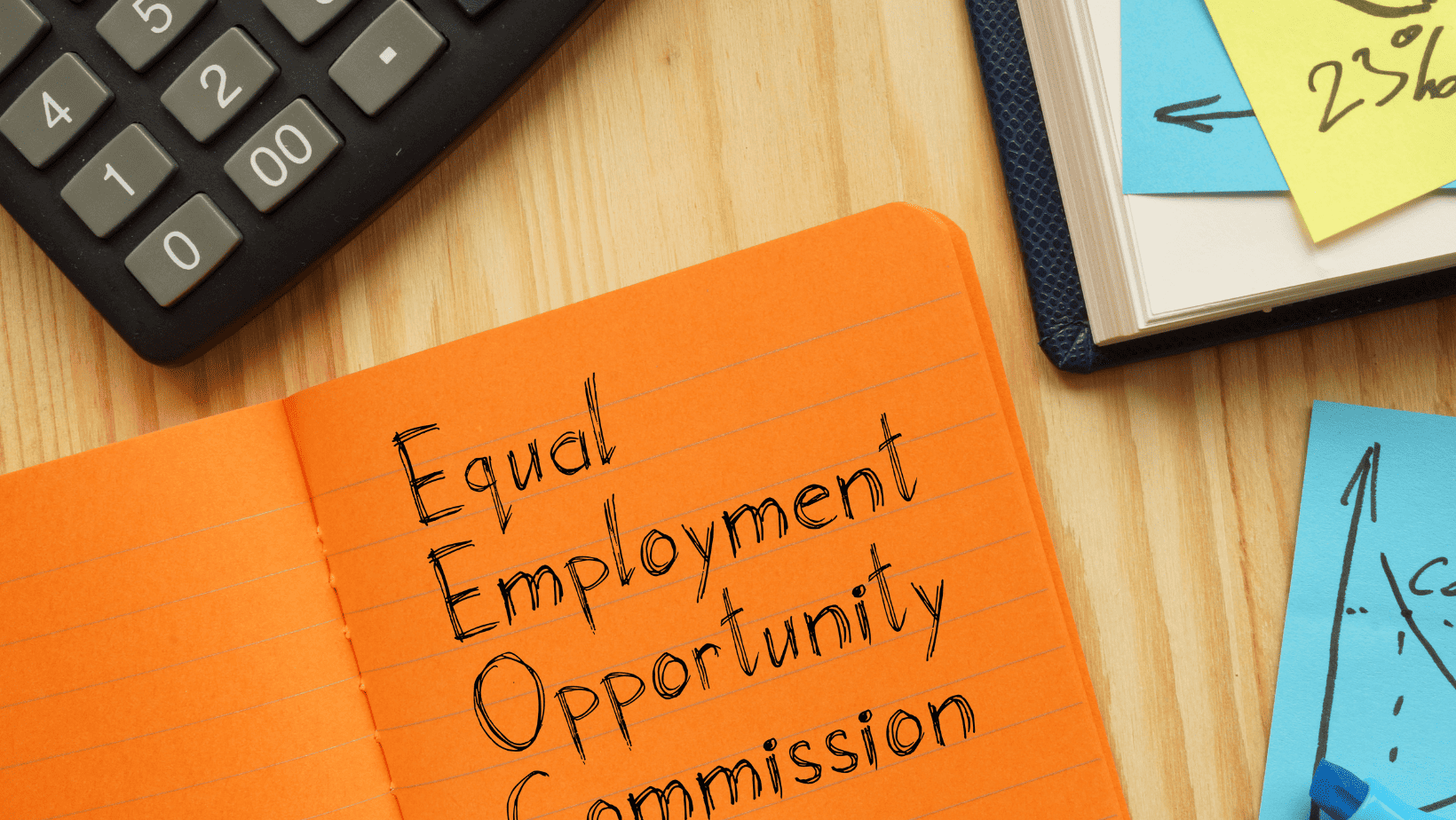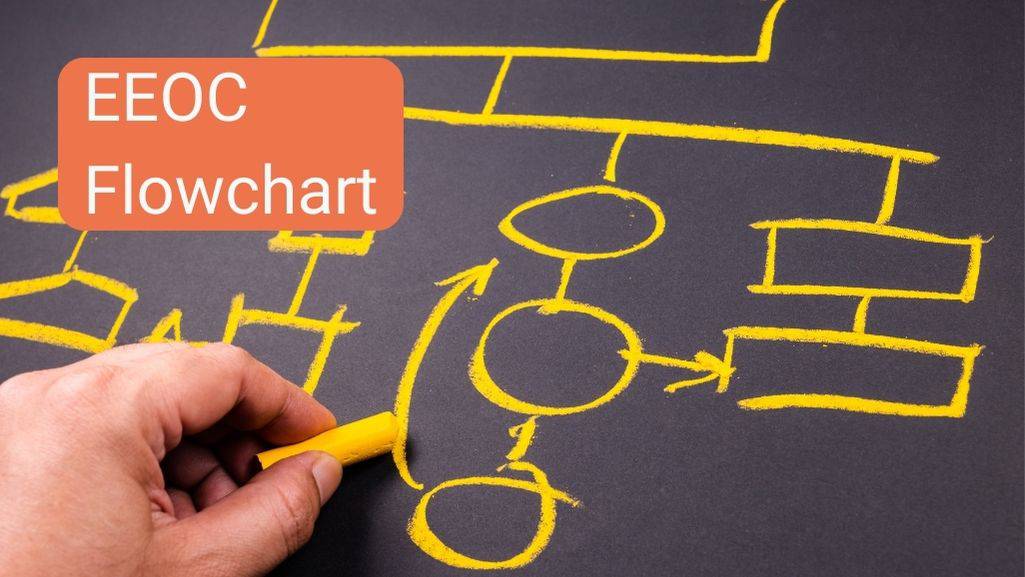I hope you enjoy reading this blog post.
If you want to represent yourself Equal Employment Opportunity Commission (EEOC), these blogs and our guide will help you be successful and get the justice you are looking for.

The Equal Employment Opportunity Commission (EEOC) is a federal agency that plays an essential role in protecting employees from discrimination or harassment based on their race, gender and age. Established to ensure people are respected and treated fairly when it comes to employment opportunities, the EEOC works hard within workplaces and federal agencies so individuals can have peace of mind knowing their rights will be safeguarded by this government organization.
Key Takeaways
The Equal Employment Opportunity Commission (EEOC) is a federal agency with a mission to promote equal employment opportunities and eliminate discrimination in the workplace.
The EEOC enforces laws such as Title VII, the Equal Pay Act, and the Age Discrimination in Employment Act to protect employees from discrimination.
It also provides resources for job applicants, protection for employees through enforcement of anti-discrimination laws, investigation of allegations and offering remedies when needed.
Info in this Blog
Understanding the EEOC's Foundation and Mission
The Equal Employment Opportunity Commission (EEOC), an independent federal agency, was established in 1964 to enforce federal laws that prohibit job discrimination. It works toward creating equal employment opportunities and eliminating workplace bias based on race, color, religion, sex (including pregnancy-related conditions, gender identity, sexual orientation), national origin, age(40+); disability or genetic information.
To fulfill its mission of equal employment opportunity laws and enforcing these regulations for employers with 15 workers minimum – 20 employees required for cases related to age discrimination – other state agencies are also involved. The EEOC has been part of civil rights movements since it emerged as a response to the Civil Rights Movement. Act which sought not only ensure equality but prevent bias across all areas within America’s society, including work environments
The Core Functions of the EEOC

The EEOC is responsible for upholding anti-discrimination laws and investigating potential violations. It works to agree to mediation and, if necessary, litigate cases in court. These are the main functions of this agency, whose goal is to protect workers from discrimination based on protected characteristics according to law. In subsequent paragraphs, more will be explained about which laws the EEOC enforces and their role in enforcing them.
Laws Enforced by the EEOC
The EEOC is tasked with enforcing various civil rights laws that protect job applicants and employees from discrimination based on race, color, religion, sex or national origin. Title VII of the Civil Rights Act. The Act of 1964 is one such law that prevents employers from practicing bias during hiring, firing, promotions, harassment, training wages, and other benefits.
Another important Equal Employment Opportunity (EEO) rule enforced by the EEOC is called the Equal Pay Act 1963, which mandates equal remuneration for similar work done in workplaces regardless of gender difference. This means investigating complaints as well as initiating legal action against any employer not upholding this act’s provisions related to wage disparity between genders.
Lastly, Age Discrimination in Employment in Employment. Act 1967 safeguards people aged 40 years old and over who are subjected to age-based discrimination. It also involves conducting hearings upon receiving reports while taking steps forward into legally binding proceedings if a given violation has been duly established.
The EEOC’s Enforcement Role
The EEOC has an important role to play in interpreting and upholding civil rights laws, providing regulations and guidelines for employers so they comply with their obligations whilst preventing prejudicial practices. To check if discrimination occurred, the Commission will investigate by reviewing documents presented, interviewing witnesses, and obtaining facts that might demonstrate reasonable cause of unlawful mistreatment.
Whenever possible, a settlement is reached between parties via mediation facilitated by the EEOC mediator who assists them in negotiating until both sign a contractual agreement concluding the accusation. Finally, when required, this department may litigate any job discrimination lawsuit against those disregarding anti-discrimination legislation. Hence taking action against employers that are not respecting civil rights statutes or morals.

Free FlowChart to Make Sure you Understand the Process!
The EEOC's Impact on Employers and Employees
The EEOC is highly influential for both employees and employers by making sure discrimination laws are obeyed. They also offer backing to job seekers as well as safeguard current staff members. The following paragraphs will explain how the EEOC helps those applying for jobs, while simultaneously protecting existing personnel from possible harm. Job applicants receive assistance in avoiding potential barriers that could be created due to bias while companies must adhere strictly to anti-discrimination laws under watch.
Support for Job Applicants
The EEOC is a powerful resource for job applicants seeking to protect themselves from discrimination in the hiring process, providing guidance and safeguards designed to ensure that any decision made by an employer rests on objective criteria rather than personal biases. To achieve this goal of workplace diversity, the agency also confirms whether decisions which may negatively affect certain groups are founded upon non-discriminatory factors such as age, race, color, religion, and gender.
Job seekers can gain access to these tools via their website or through email contact with them. They can utilize services from the EEOC Public Portal if faced with employment discrimination allegations. It’s essential that all who seek out work remain aware of their rights and how best they may be upheld – employing agencies aiding candidates do have importance but should not replace utilizing sources like those offered by the EEOC.
Protections for Employees
The EEOC is an instrumental part of upholding civil rights and laws that protect employees from any form of workplace discrimination, in line with Title VII as enacted through the Civil Rights Act. This involves investigations to ensure employers are held accountable for their actions along with providing remedies where applicable. Reinforcing justice by introducing back pay or compensatory/punitive damages when appropriate. They support companies to understand how best to prevent workplace discrimination via training programs while also engaging stakeholders through education opportunities too. All these aspects contribute towards cultivating a culture free of prejudice and inequality within employment environments – making sure all people’s voices are heard and everyone has fair and equal opportunity regardless of circumstances beyond control such as race or gender etc.
Navigating the EEOC Public Portal and Filing a Charge
The EEOC Public Portal is a valuable resource for those wanting to take legal action against discrimination, access resources and view the progress of their case online or by phone. Through this portal, individuals can submit an inquiry, set up an interview with someone from the agency in charge of processing charges, finish filing paperwork related to it as well as upload associated documents if needed.
On this same platform people are allowed to track what happens after having filed their complaint, both charging parties and respondents being able to check out updates about it all times so that everything stays transparent. Seeking help technical assistance from a specialized lawyer when submitting one’s claim to the Equal Employment Opportunity Commission (EEOC) must be taken into consideration since doing so would allow them better understanding how law works regarding such cases even when they have been dismissed previously thus obtaining professional guidance during the whole process.
The Legal Landscape: EEOC and the Supreme Court
The EEOC closely collaborates with the Supreme Court to lay down and enforce laws against discrimination, making sure all work environments are equitable. These rulings by the highest court have an immense effect on how strongly these civil rights can be imposed through legal measures – in particular Bostock v Clayton County (GA), which stated that workers of LGBTQ identity should benefit from similar safeguards as those enshrined in Title VII of the Civil Rights Act. Other significant cases backed up by EEOC include Abercrombie & Fitch Stores vs. Price Waterhouse v Hopkins, who also had a major say on what this law enforcement means for employers’ behavior nationwide when it comes to equality at workplace under enforcing federal laws and regulations regarding employment discrimination based upon sex or other factors. The organization plays an important role if proceedings reach higher courts, including filing suits on behalf of victims affected by prejudice among many other related activities which makes them essential allies toward upholding justice equally everywhere without leaving any room for bias within professional contexts.
Conclusion
The EEOC is a major force United States government in establishing fair and equal rights for all within the workplace, regardless of race, color, religion, sex national origin and disability. The mission of this organization has significant ramifications on employers as well as employees by ensuring they abide by anti-discrimination laws based on genetic information, something that requires ongoing monitoring through legal proceedings such as those held at the Supreme Court level.
By being aware of what role the EEOC plays when it comes to creating an inclusive working environment free from prejudice towards any protected characteristics listed above. We are one step closer to achieving justice across various employment agencies and sectors worldwide.
Frequently Asked Questions
What is the EEOC and what is its purpose?
The EEOC, a federal agency responsible for upholding laws against discrimination in the workplace, covers race, color, religion, national origin and sex when it comes to hiring/firing/promotions/harassment. As well as training, wages and benefits. It Protects from age-based or genetic information based unfairness.
What types of laws are covered by the EEOC?
The EEOC enforces a set of civil rights laws that prohibit discrimination against employees on the basis of age, disability, equal pay/compensation, genetic information, harassment based on national origin and other factors such as race/color, religion sex or sexual orientation. This includes The Age Discrimination in Employment Act 1967 (ADEA), Title I & V from Americans with Disabilities Act 1990 (ADA), Equal Pay Act 1963 (EPA). Sections 501&505 Rehabilitation act 1973 & Title VII Civil Rights Act 1964.
What is the rule of EEOC?
The Equal Employment Opportunity Commission (EEOC) is tasked with enforcing laws that prevent discrimination against job applicants and employees based on race, color, religion, sex, national origin or age. EEOC also enforces prohibition of discrimination related to gender identity and sexual orientation in order for everyone to receive an equal employment opportunity.
What resources does the EEOC offer job applicants?
The EEOC offers advice to job applicants, including various factsheets and videos. It also includes a glossary of terms that can help in the search process as well as contact details if Assistance is required.
What is the significance of the Supreme Court in the EEOC’s legal landscape?
The Supreme Court is a vital component in the regulation of EEOC standards, ensuring that discrimination laws and labor unions are observed and enforced for creating an evenhanded work environment. The court’s decisions act to guarantee workers’ rights against any form of prejudice.
Do you want Justice in front of the EEOC
Get Started Today and make the moves necessary to take back your freedom and right the wrongs at your workplace.

About Brandon
A licensed attorney with over 10 years of experience – I’ve noticed a lack of support for people who want to represent themselves in court.
So, I’ve created video guides that will help you gain back control of some of the least predictable situations you could experience in your lifetime.
Emloyment law Guides
- Intro to EEOC
- Why EEOC Exists
- What Claims to File
- EEOC Complaint Process
- Types of Discrimination
- Protected Classes
- Employer Obligations
- Preparing to File
- Time Limits in EEOC
- The Right Place to File
- Online Filing System
Do You Want Justice In Front Of The EEOC
Get Started Today and make the moves necessary to take back your freedom and right the wrongs at your workplace.
EEOC Guides
- Benefits of Mediation
- Requesting Mediation
- Mediation Process
- When to Consider Mediation
- Assign to Investigator
- Working with the Investigator
- Role of Employer
- Timelines for Investigation
- Outcomes of Investigation
- Conciliation Process
- Reasonable Cause
- Settlements